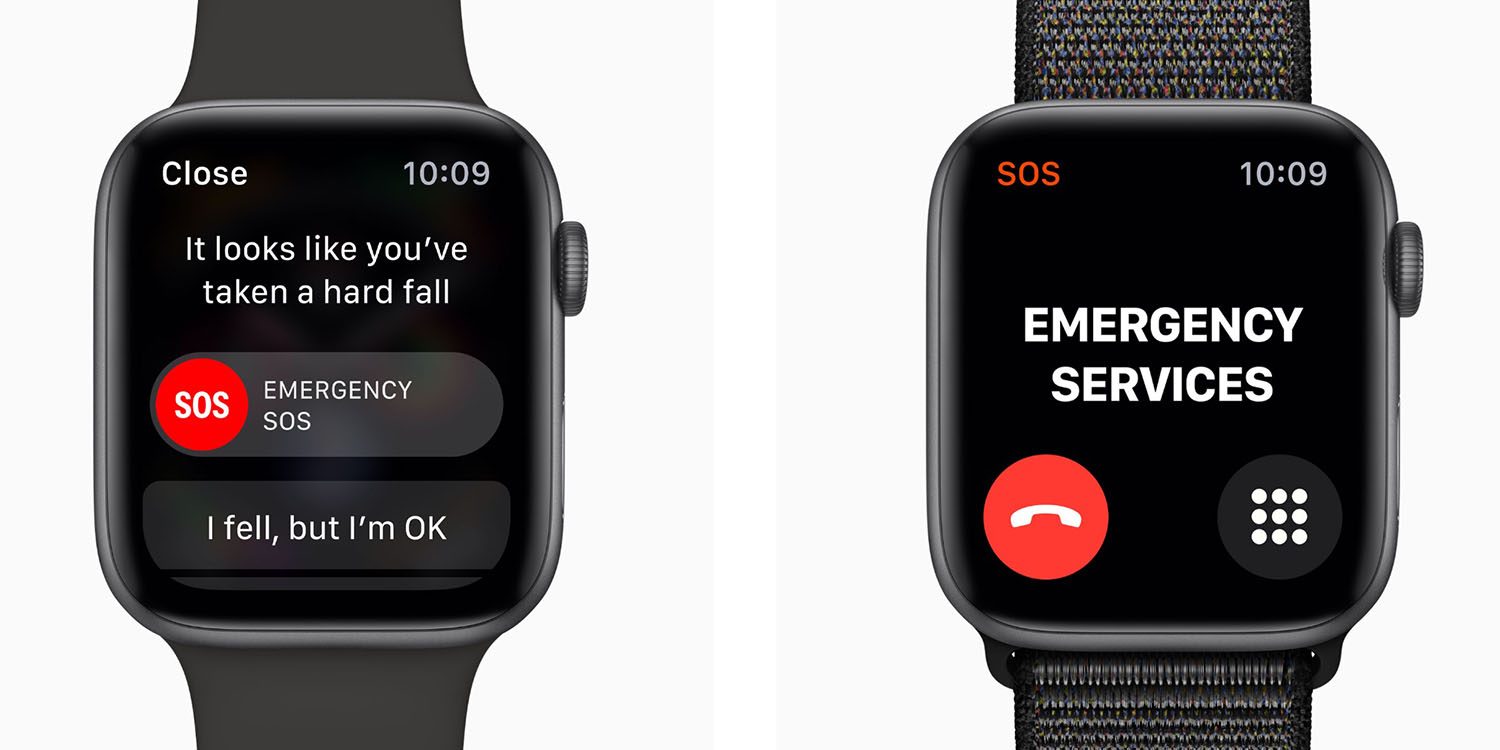
Apple Watch Fall Detection has been credited with saving a number of lives, thanks to its ability to automatically call emergency services if it detects you falling and you don’t confirm that you’re ok.
But the feature could get even more sophisticated in future, with the ability to send comprehensive data to emergency services so they can get a sense of your condition before the ambulance arrives …
At present, the Apple Watch uses a range of cues to detect a fall. If it thinks it has detected one, it first asks you if you have fallen, and if you are ok. If you do not respond, it automatically calls emergency services. It uses artificial speech to advise that a smartwatch user has fallen, and not responded, and it tells them your location and can share your Medical ID. It then advises your own emergency contacts that it has detected a fall, and that it has already contacted emergency services.
Patently Apple spotted the latest in a series of patents in which the Apple Watch builds on this capability, with the ability to send identification and health data as part of the audio message.
Apple goes further than this, and includes other identification and health data.
One aspect of the present technology is the gathering and use of data available from specific and legitimate sources to improve the ability of user devices to assist in emergency situations by making emergency calls on behalf of the user and providing valuable information to the recipients.
Apple contemplates that in some instances, this gathered data may include personal information data that uniquely identifies or can be used to identify a specific person. Such personal information data can include demographic data, location-based data, online identifiers, telephone numbers, email addresses, home addresses, data or records relating to a user’s health or level of fitness (e.g., vital signs measurements, medication information, exercise information), date of birth, or any other personal information.
Apple recognizes that the use of such personal information data, in the present technology, can be used to the benefit of users. For example, the personal information data (e.g., users health information, physical location, etc.) can be used to help emergency service responders and technicians to identify when a user needs medical attention and/or where the user is located. For example, information about previous health conditions of the user can help emergency services identify what type of medical attention is needed, and what type of technicians to send to the location of the user.
Health metrics that may be computed using the electrodes include, without limitation, heart functions (ECG, EKG), water content, body-fat ratios, galvanic skin resistance, and combinations thereof.
The Apple Watch doesn’t yet have sensors enabling it to gather all of this data, though we do expect additional sensors to be added over time. However, much of this data may already exist in the Health app. For example, if the casualty uses smart scales at home, the Health app may know things like their age, height, weight, BMI and body fat percentage.
This opens up the possibility of a very comprehensive automated briefing being given on 911 calls. For example, it might be something like this:
This is an automated emergency call on behalf of John Appleseed. John is a 38-year-old man who has had a hard fall, and is non-responsive. His current location is approximately 767 5th Ave, New York, NY 10153. John’s current heart-rate is 33 beats per minute. His normal resting heart rate is 42 beats per minute. John is five feet and 11 inches tall and weighs 168 pounds. His BMI is 23.5 and his body-fat is 22%, both within healthy ranges. He shows no sign of afib. John takes regular exercise, and the health data on his phone does not record any known medical conditions or medication. This message will repeat a further three times, with updated heart rate.
- Apple Watch fall detection helps save life of 92-year-old farmer after fall from a ladder
- Apple Watch fall detection saves New Jersey man after tumbling off cliff and breaking his back
- Apple Watch fall detection credited with saving user in Norway after severe overnight fall
- Apple Watch fall detection praised for calling 911 and providing location info after man fainted
- Apple Watch helps EMTs and family locate mountain biker after unexpected fall
- Apple Watch fall detection and SOS features credited with saving mother of three after seizure
- Apple Watch fall detection helps 87-year-old woman call emergency services after car accident
- Apple Watch fall detection sends paramedics to the rescue when San Francisco e-biker hit by car
- Apple Watch fall detection sent emergency services to the aid of an 80-year-old woman
FTC: We use income earning auto affiliate links. More.





Comments